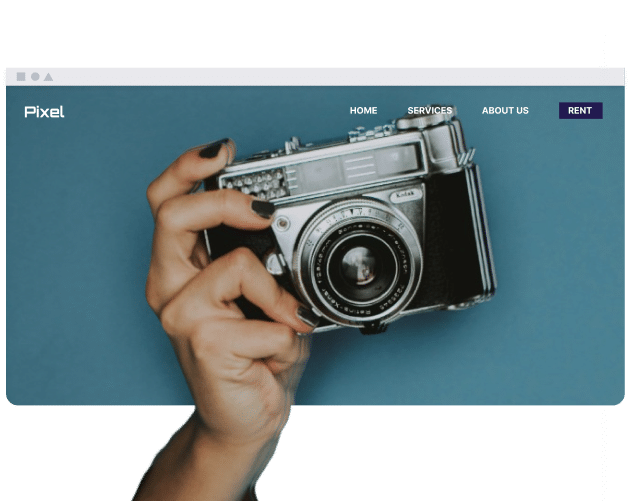What are the key elements of effective portfolio website navigation?
Positive navigation is associated with several core principles that affect the general user experience. Here are some primary principles:
- Straightforward and clean layout: Avoid cluttered designs, which can distract customers. Concentrate on your work and use simple menus like Home, Portfolio, About, and Contact.
- Mobile-friendly: Make certain your portfolio functions seamlessly on all devices. Over half of web traffic comes from mobile devices.
- Simple navigation: Navigation of larger portfolios might be influenced by the presence of search boxes. Also, enable breadcrumbs, which track a user’s movement throughout the site.
- CTAs: Accompany customers with CTAs, such as “Hire Me,” “View My Work,” or “Contact Me.” Ensure to place them at the center of the homepage as well as the portfolio pages.
How does good navigation enhance user experience on a portfolio website?
A user-friendly and effective navigation system has implications for visitor engagement with your portfolio as well as visitor satisfaction. Here is how it impacts the user experience:
- Intuitive menus and labels: Understanding users’ needs aids in better segmentation of navigation menus.
- Standardized navigation: Similar actions should be placed in the same relative spots across pages.
- Testing and optimization: Change your navigation structure according to what users say and update it on a regular schedule.
What are some common mistakes to avoid in portfolio website navigation?
To make your portfolio easier to use, there are specific navigation mistakes to avoid. Here are some of them:
- Not paying attention to load speed: Image and website structure optimization is necessary for quicker load times.
- Not displaying the navigation menu: Ensure your menu is prominently visible on desktop versions.
- Offering too many options: Avoid overwhelming visitors with a large number of choices; aim to facilitate their decision-making.
- Failure to maintain consistency across devices: A good website is built to allow intuitive navigation, regardless of the variety of screen sizes.
What are the different types of navigation commonly used on portfolio websites?
Portfolio websites employ different navigation styles based on design and content needs. Here are some of the different approaches:
- Horizontal navigation bar: A text menu located at the top of the site, sometimes designed to remain visible during scrolling.
- Hamburger menu: A mobile-friendly three-lined menu icon.
- Mega menu: A large panel revealing all categories and subcategories on e-commerce websites.
- Hover-based dropdown menu: The second level of categories is shown upon hovering.
- Vertical sidebar: A menu on the left side of the page.
- Footer navigation menu: Navigation options located at the bottom of the website.
How can I test and improve the navigation of my portfolio website?
For navigation to be user-friendly and effective, you need to test it and be willing to improve it. Here’s the way you should go about doing that:
- User testing: Get real users to interact with the site and give feedback.
- Tree testing: Test how well users can navigate through your website.
- Analytics: Monitor user behavior on your website using tools like Google Analytics.
How can visual design and branding be integrated into the navigation of a portfolio website?
Like every other part of your website, your site navigation should reflect your brand. This is how you can combine design and branding for your website.
- Consistency: Maintain the same colors, fonts, and logo positioning throughout your branding.
- Functionally appealing: Strive for a nice-looking website, but make sure all elements add an extra function.
- Responsive branding: Change brand designs for varying screen sizes.
Conclusion
A well-built site navigation is needed for an effective portfolio website. By paying attention to details like simplicity, mobile adaptation, ongoing updates, and clarity, you help users accomplish their objectives, ranging from analyzing your work to contacting you, appropriately.

